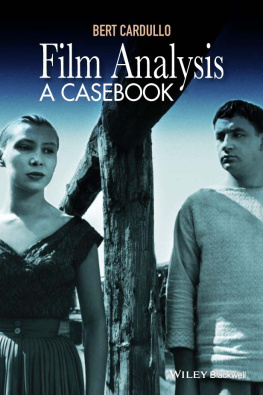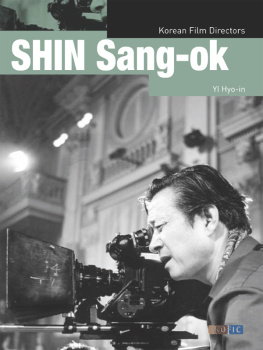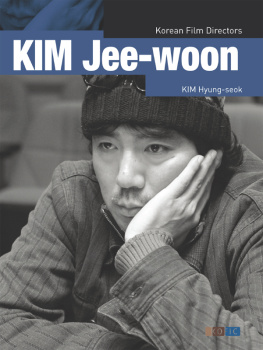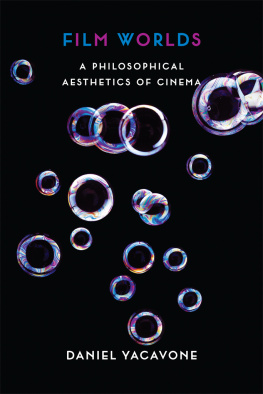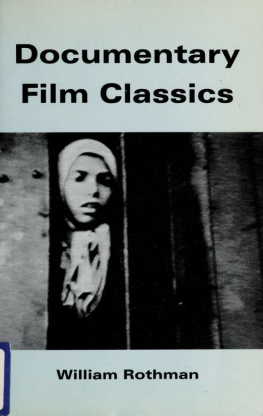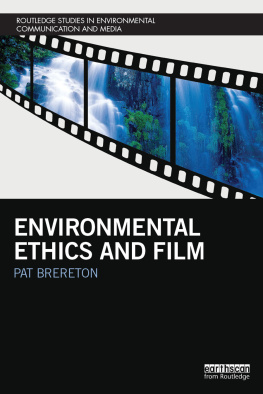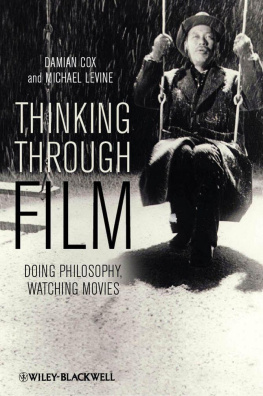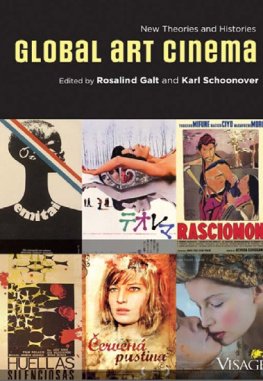
This edition first published 2015
2015 John Wiley & Sons, Inc
Registered Office
John Wiley & Sons Ltd, The Atrium, Southern Gate, Chichester, West Sussex, PO19 8SQ, UK
Editorial Offices
350 Main Street, Malden, MA 02148-5020, USA
9600 Garsington Road, Oxford, OX4 2DQ, UK
The Atrium, Southern Gate, Chichester, West Sussex, PO19 8SQ, UK
For details of our global editorial offices, for customer services, and for information about how to apply for permission to reuse the copyright material in this book please see our website at www.wiley.com/wiley-blackwell.
The right of Robert Cardullo to be identified as the author of this work has been asserted in accordance with the UK Copyright, Designs and Patents Act 1988.
All rights reserved. No part of this publication may be reproduced, stored in a retrieval system, or transmitted, in any form or by any means, electronic, mechanical, photocopying, recording or otherwise, except as permitted by the UK Copyright, Designs and Patents Act 1988, without the prior permission of the publisher.
Wiley also publishes its books in a variety of electronic formats. Some content that appears in print may not be available in electronic books.
Designations used by companies to distinguish their products are often claimed as trademarks. All brand names and product names used in this book are trade names, service marks, trademarks or registered trademarks of their respective owners. The publisher is not associated with any product or vendor mentioned in this book.
Limit of Liability/Disclaimer of Warranty: While the publisher and author have used their best efforts in preparing this book, they make no representations or warranties with respect to the accuracy or completeness of the contents of this book and specifically disclaim any implied warranties of merchantability or fitness for a particular purpose. It is sold on the understanding that the publisher is not engaged in rendering professional services and neither the publisher nor the author shall be liable for damages arising herefrom. If professional advice or other expert assistance is required, the services of a competent professional should be sought.
Library of Congress Cataloging-in-Publication Data
Cardullo, Bert.
Film analysis : a casebook / Bert Cardullo.
pages cm
Includes bibliographical references and index.
Includes filmography.
ISBN 978-1-118-92699-4 (cloth) ISBN 978-1-118-92698-7 (pbk.) 1. Film criticism. I. Title.
PN1995.C3529 2014
791.43'75dc23
2014018419
A catalogue record for this book is available from the British Library.
Cover image: La Pointe Courte, directed by Agns Varda (1954, France)
Preface
I would like to suggest that the fundamental way, conscious or not, in which we determine the quality of a film is by the degree to which the re-experiencing of ourselves through it coincides with our pride, our shames, our hopes, our honor. It follows that distinctions among movies arise from the way they please or displease us with ourselves: not whether they please or displease but how.
This is true, I believe, in every art form today; it is not a monopoly held by the cinema. But in the cinema it has become more true more swiftly and decisively because film has a much smaller heritage of received aesthetics to reassess; because film is bound more closely to the future than other arts seem to be (the reason is that, by its very episodic or journeying form, film reflects for viewers the belief that the world is a place in which man can leave the past behind and create his own future); and because film confronts us so immediately, so seductively, and so shockingly (especially on the larger-than-life screen) with at least some of the truth about what we have been doing with ourselves. To the extent that film exposes the viewer to this truth about him- or herself, in his or her experience of the world or of fantasy, in his or her options for action or for privacy, to the extent that he or she can thus accept a film as worthy of him- or herself or better than him- or herselfto that extent a film is valuable to the viewer.
Of course the whole process means that human beings feed on themselves, on their own lives variously rearranged by art, as a source of values. But despite other prevalent beliefs about the past connected with theology and religion, we are coming to see that people have always been the source of their own values. In the century in which this responsibility, this liberation, became increasingly apparentthe twentieththe intellect of man simultaneously provided a new art form, the film, to make the most of it.
That art form is obviously still with us, and now, in the twenty-first century, more than ever, it seems. And its critics proliferate in number, in part because of what I described earlier: the personal element involved in the watching of any movie, as well as the ease nowadays with which, through the Internet, one can communicate that personal response to others. If, as Oscar Wilde once said, Criticism is the highest form of autobiographybecause only by intensifying his own personality could the critic interpret the personality and work of othersthen film criticism must be an even higher form.
One purpose of Film Analysis: A Casebook is to stake out territory not just for film criticism, but for a certain type of film criticone somewhere between a reviewer-journalist and a scholar-theorist. At a time when the movie review has degenerated into mere publicity for Hollywood pictures and film scholarship has become entangled in its own pseudo-scientific discourse, the author offers readable analyses, in survey form, of what he considers to be some of the most important international films, and film artists, from the silent period to the turn of the twenty-first centuryor from a relatively early point in the emergence of the feature-length film to a relatively early point in the emergence of a new (digital) aesthetic.
The close readings in Film Analysis: A Casebook go beyond simple biographical capsules, plot summaries, and vague impressions about acting (the province of the newspaper review), on the one hand, yet pull up short of oracular theoretical pronouncements on the state of the art and its artists (the province of the academic monograph), on the other hand. The essays contained in this volume are thus acts of interpretationhistorical and theoretical as well as criticalin the humanistic senses of those words, not gaseous musings or pedantic tracts. With what he hopes are elegance, clarity, and rigor, the author tries ever to demonstrate that the cinema means as well as shows, and his ultimate aim is to explain how international moviemakers use the resources of the medium to pursue complex, significant human goals in their personal, often independent films.
For this reason, Film Analysis: A Casebook is aimed at college students and professors with a special interest in global cinema, as well as at the educated or cultivated moviegoer and the general or common reader. Anyone attending or teaching a university-level course in film analysis and criticism, film history, international cinema, or independent film ought to find this book enlightening and helpful, for the essays included in it cover some of the central filmsand central issues raisedin today's world cinema courses and provide students with practical models to help them improve their own writing and analytical skills. The entries in
Next page
